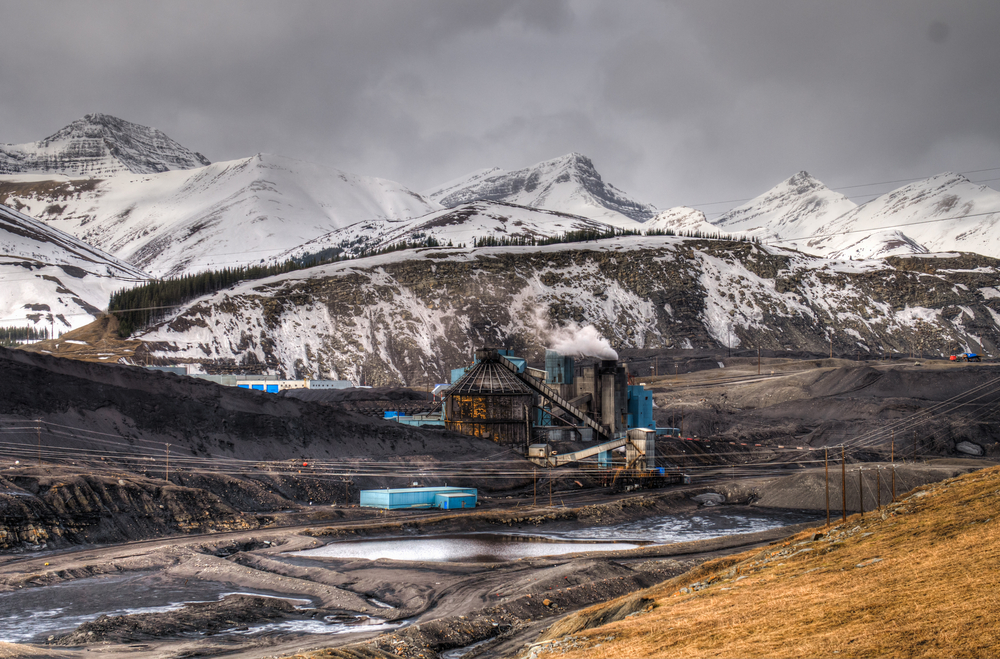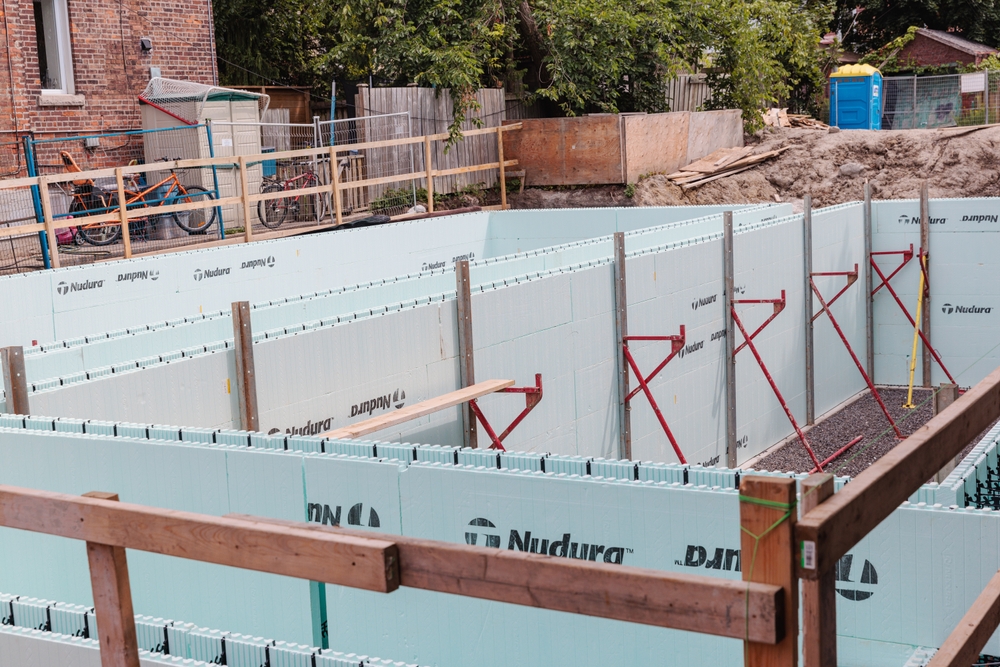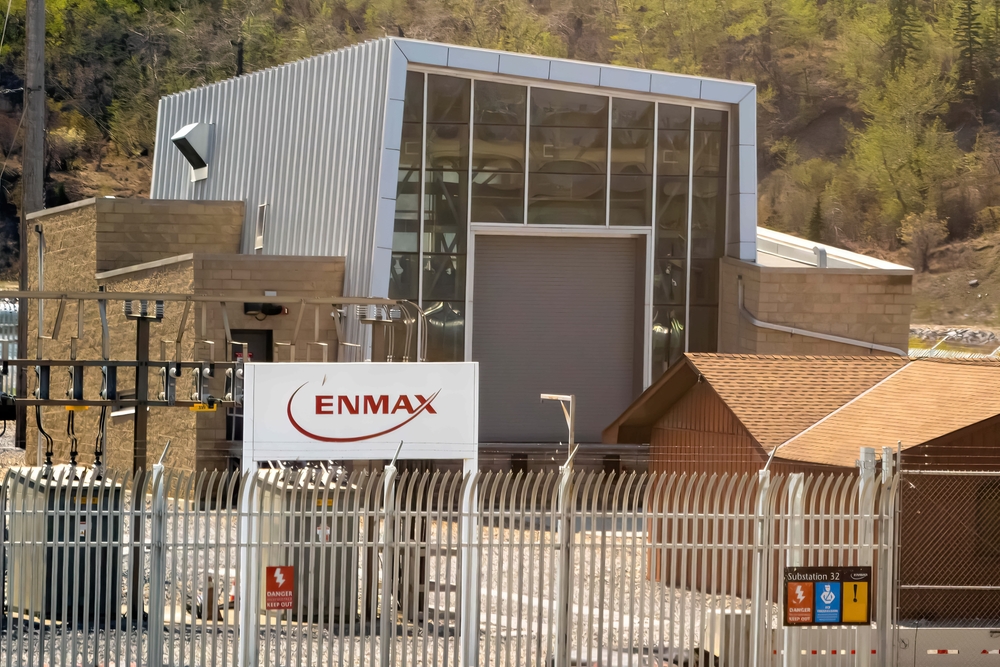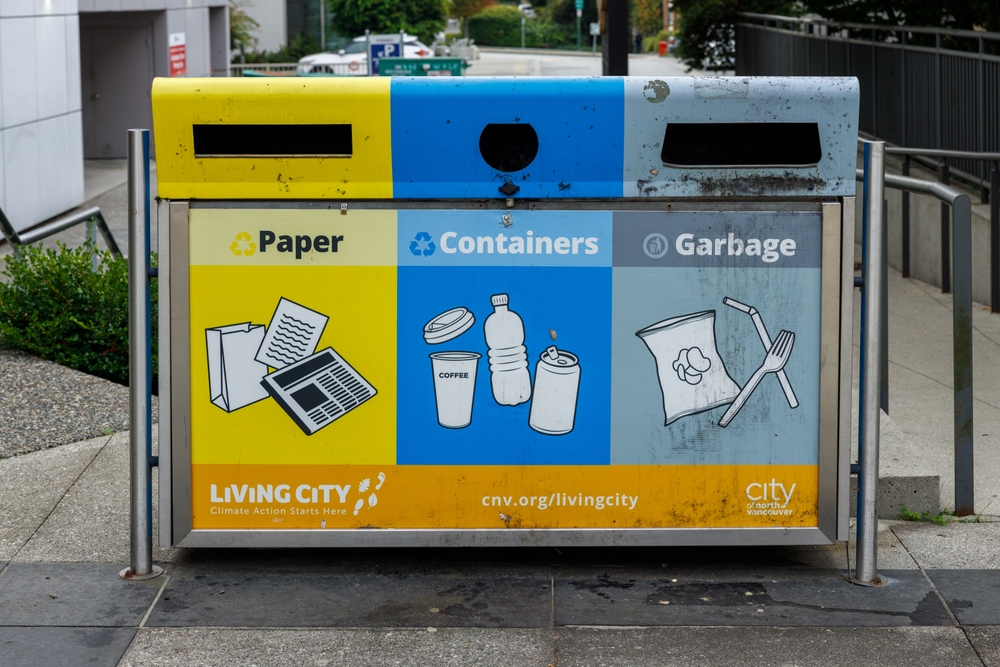Many countries are working toward stronger climate action, but a closer look shows that Canada has been building a steady, data-backed, and well-structured approach that consistently places it ahead of global peers. Its strategy focuses on realistic transitions, long-term investments, and policies shaped around measurable outcomes rather than short-lived announcements. Here are 23 ways Canada is handling climate change better than anyone.
Early investment in clean energy innovation

A major reason for its leadership is the long-running investment in clean energy innovation that began well before many countries took climate targets seriously. Federal and provincial programs have consistently funded research into new technologies, grid modernization, and low-carbon production methods. These initiatives gave energy companies room to experiment with early-stage ideas that later grew into commercial projects. Universities and private firms also collaborated extensively through grants, pilot programs, and shared facilities. By the time global interest in clean energy scaled up, the country already had a solid research ecosystem, allowing it to move quickly into real deployment rather than starting from scratch.
Rapid growth in renewable electricity capacity

The energy transition is supported by a steadily expanding renewable electricity system that adds thousands of megawatts of clean power each year. Hydropower, wind, and solar projects have been built through coordinated regional planning that avoids unnecessary delays. Long-term procurement contracts give developers financial stability while community benefit agreements ensure local support. The grid integrates these projects through transmission upgrades and improved forecasting tools. This growth makes the electricity supply increasingly clean and reliable, supporting climate goals without compromising industrial output. The stable renewable expansion also provides a foundation for electrifying transportation, heating, and manufacturing sectors in the near future.
Clear national carbon pricing framework

One of the strongest features of its climate strategy is a consistent national carbon pricing system that applies across provinces. By putting a predictable cost on pollution, the policy pushes businesses to adopt more efficient technology and encourages households to choose lower-carbon options. Unlike fragmented systems in other countries, this approach provides long-term certainty for industries making multimillion-dollar investment decisions. The revenues are returned to residents through rebates that offset cost impacts, making the policy financially fair. This combination of economic clarity and household protection has allowed the system to remain stable and effective despite political changes.
Phaseout of coal-powered electricity

The decision to phase out coal power created one of the most significant emissions reductions in the industrialized world. The transition combined clear deadlines, support for workers, and targeted investments in replacement infrastructure. Utilities shifted their generation portfolios through renewables, natural gas, nuclear refurbishments, and energy efficiency upgrades. Communities dependent on coal mining and coal-fired facilities received transition assistance, helping them shift toward new industries and training programs. This structured approach avoided energy shortages and prevented economic shocks. The result is an electricity system that is far cleaner than those of many peer countries still relying heavily on coal.
Strong methane regulations for oil and gas

Methane is a powerful contributor to climate change, and the country introduced stringent regulations well before most nations established similar rules. The policy requires energy companies to detect, repair, and reduce methane leaks on a strict timeline. It also pushes the industry toward improved equipment, continuous monitoring systems, and verified reporting. These standards apply to both new and existing operations, closing loopholes that often weaken regulations elsewhere. The reductions achieved so far are among the highest internationally for an oil and gas-producing country. This shows that climate progress is possible even in sectors traditionally considered difficult to decarbonize.
Expansion of protected natural areas

The climate plan includes large-scale conservation efforts that protect forests, wetlands, grasslands, and coastal ecosystems. These regions store significant amounts of carbon and support climate resilience by reducing flooding and preserving biodiversity. Indigenous led conservation programs have been central to this expansion, giving communities authority to manage lands through long-term stewardship agreements. Governments collaborate with local groups, scientists, and landowners to identify high-priority areas for protection. This approach supports ecological health while ensuring economic activities align with sustainable land use practices. The growing network of protected areas strengthens climate adaptation and builds a stable natural carbon sink.
Early leadership in clean hydrogen development

Clean hydrogen has become an important part of global climate planning, and the country established programs to scale up production, distribution, and technology development early in the global race. Pilot projects in transportation, industrial processes, and long-duration energy storage have created valuable real-world data. Government incentives support electrolyzer manufacturing, renewable hydrogen production, and regional hydrogen hubs. Private companies invest heavily in long-term offtake agreements that give producers confidence to expand. These efforts position the country as a major future supplier of clean hydrogen to both domestic industries and international trading partners seeking reliable low low-carbon fuels.
Grid modernization and interprovincial transmission planning

An effective climate response requires a modern and flexible electricity grid. Investments in digital monitoring, smart meters, advanced inverters, and automated control systems have improved stability across regions. Interprovincial transmission planning supports clean energy sharing during peak demand periods, reducing reliance on fossil backup plants. The grid operator uses climate-informed forecasting to manage extreme weather events such as heat waves, storms, and cold snaps. These upgrades enable higher levels of renewables without sacrificing reliability. By expanding transmission corridors and improving grid intelligence, the system becomes more efficient and ready for future electrification demands across transportation and industry.
Industrial decarbonization incentives

Industries receive targeted incentives to reduce emissions through modernized equipment, low-carbon heating technologies, electrified processes, and cleaner production methods. Grants, tax credits, and low-interest financing help companies accelerate innovation without facing overwhelming upfront costs. Steel, cement, aluminum, and chemical manufacturers have used these incentives to test new processes that lower emissions while maintaining competitiveness. The focus on long-term industrial planning ensures factories can transition gradually rather than facing disruptive changes. This approach protects jobs while supporting cleaner technologies that align with global expectations for low-carbon production, giving domestic products a strong position in international markets.
Strong collaboration with Indigenous communities

Indigenous leadership plays a central role in the climate strategy, shaping land stewardship, conservation policies, and clean energy planning. Communities participate directly in renewable projects through ownership stakes, revenue-sharing models, and partnership agreements. This ensures that benefits reach people living on the land and that cultural knowledge informs environmental management. Many successful conservation initiatives are Indigenous led, creating long-term climate benefits while supporting local economic development. Governments increasingly engage Indigenous experts early in planning processes to ensure projects align with local priorities. This collaborative model strengthens climate resilience and sets a strong global example.
Nationwide adaptation and resilience planning

The country developed detailed adaptation plans that address climate risks such as extreme heat, wildfires, coastal flooding, and infrastructure vulnerabilities. These plans guide city governments, provincial departments, and emergency management agencies in building more resilient communities. Investments include wildfire prevention strategies, upgraded flood defenses, reinforced transportation networks, and enhanced building codes. Public health agencies also prepare for climate-related health risks through early warning systems and heat response protocols. By coordinating across multiple sectors, the adaptation strategy ensures that climate resilience becomes part of long-term development planning rather than an afterthought triggered only by emergencies.
Support for zero-emission vehicle adoption

Transportation policy prioritizes widespread adoption of zero-emission vehicles through rebates, charging infrastructure investments, and fuel efficiency standards. Drivers receive incentives that reduce upfront purchase costs while businesses benefit from tax credits for commercial fleets. Charging networks expand through public stations, workplace programs, and highway corridors. Regulations push automakers to supply increasing numbers of electric models, offering consumers greater choice. Municipalities integrate charging options into residential planning and public parking facilities. The combination of infrastructure, incentives, and regulation creates the conditions needed for steady growth in zero-emission transportation across both urban areas and remote regions.
Strong investments in public transit systems

Public transit funding has increased significantly to support climate-friendly urban mobility. Cities receive long-term funds for rail expansions, electric buses, rapid transit corridors, and accessible stations. These investments reduce traffic congestion, lower transportation emissions, and create more efficient commuting options. Transit systems incorporate climate resilience features such as flood-resistant infrastructure and heat-tolerant materials. Municipal agencies coordinate land use planning to encourage transit-oriented development that reduces reliance on private vehicles. The emphasis on reliable and affordable public transit supports low-carbon travel for millions of people, contributing meaningfully to overall emissions reductions.
Energy efficiency programs for homes and buildings

Homes and buildings account for a large share of emissions, and targeted programs help residents upgrade insulation, heating systems, windows, and ventilation. Rebates reduce renovation costs while performance standards encourage builders to design efficient new structures. Heat pump incentives support a shift away from fossil fuel heating, lowering household energy consumption and emissions. Energy audits help residents identify cost-effective improvements. Building codes incorporate higher efficiency requirements that gradually raise the performance of new construction. The combination of financial support and regulatory clarity makes building efficiency one of the most consistent sources of climate progress nationwide.
Emphasis on sustainable agriculture practices

Agriculture policies encourage farmers to adopt practices that reduce emissions while improving soil health and productivity. Programs support precision fertilization, reduced tillage, livestock methane reduction technologies, and regenerative land management. Funding helps farmers test innovative equipment and participate in carbon offset programs that reward climate-friendly practices. Research partnerships between government, universities, and farming organizations develop new crop varieties and techniques suited to changing weather patterns. These measures support both climate mitigation and long-term food security. By integrating economic viability with environmental planning, the agriculture sector strengthens resilience while lowering its overall climate impact.
Leadership in carbon capture and storage projects

The country hosts several large-scale carbon capture and storage projects that demonstrate the real-world feasibility of capturing industrial emissions and storing them securely underground. Policymakers support these projects through incentives, regulatory clarity, and geological mapping that identifies suitable storage sites. Heavy industries such as cement, steel, and hydrogen production use carbon capture technology to reduce unavoidable emissions. These projects generate valuable data that helps refine global best practices. While carbon capture is not a standalone solution, its integration into a broader climate strategy provides a practical pathway for transitioning hard-to-reduce sectors without abrupt disruptions.
Reinforcement of climate science and environmental monitoring

Accurate climate planning relies on strong scientific institutions and monitoring systems. National climate research centers collect data on temperature trends, ocean conditions, atmospheric changes, and extreme weather patterns. Satellite observations, weather stations, and remote sensors provide detailed information for forecasting and risk assessment. Scientists collaborate with international networks to refine global climate models. Environmental monitoring programs track biodiversity, water quality, pollution levels, and land use changes. This evidence-based approach ensures that policies respond to real-world conditions rather than outdated assumptions. The commitment to climate science strengthens public trust and improves long-term decision-making.
Funding for community-led climate initiatives

Local governments and community organizations receive support for projects that address climate challenges at the neighborhood level. These initiatives include urban tree planting, green roofs, small-scale renewable installations, community gardens, stormwater management upgrades, and education programs. Funding mechanisms allow municipalities to tailor solutions to their specific climate risks and population needs. Community involvement increases participation and ensures projects reflect local priorities. Many initiatives reduce energy costs, improve air quality, and enhance public spaces, creating social benefits along with emissions reductions. This bottom-up approach complements national policies and builds climate resilience from the ground up.
International climate finance contributions

The country contributes to global climate finance programs that help developing nations transition to clean energy, improve adaptation capacity, and strengthen climate governance. Funding supports renewable energy projects, resilience infrastructure, climate risk assessments, and early warning systems in regions facing severe environmental pressures. These contributions create long-term partnerships with countries implementing sustainable development strategies. By supporting global climate progress, these efforts help stabilize international markets and reduce future humanitarian risks. The commitment to climate finance demonstrates that climate leadership includes both domestic action and meaningful support for countries with fewer resources to address climate impacts.
Climate-aligned trade and economic policies

Trade agreements and economic strategies increasingly incorporate climate considerations such as emissions standards, clean technology cooperation, and low-carbon supply chain requirements. Businesses receive guidance on meeting international sustainability expectations, allowing them to access growing global markets for low-carbon goods. Climate-aligned trade policies encourage companies to adopt cleaner production methods that improve competitiveness. These measures also support the export of clean technologies such as renewable energy equipment, hydrogen systems, and energy efficiency solutions. Integrating climate objectives into trade policy ensures economic growth aligns with long-term environmental goals and global market trends.
Investment in wildlife and habitat restoration

Climate change threatens many species, and restoration programs aim to rebuild damaged habitats through reforestation, wetland rehabilitation, coastal protection, and invasive species control. Scientists work with local communities to identify areas where restoration offers the greatest ecological and climate benefits. Parks and conservation organizations implement long-term projects that strengthen ecosystems and improve biodiversity. Wildlife corridors help species adapt to shifting habitats and changing temperatures. Restoration work also improves local air and water quality, contributing to healthier communities. These initiatives support climate resilience by ensuring natural systems remain strong enough to withstand environmental pressures.
Youth engagement in climate policy

Youth organizations, student networks, and young climate leaders actively participate in national policy discussions. Governments support youth advisory councils, climate education programs, and funding for youth-led initiatives. This involvement ensures long-term climate planning reflects generational perspectives and encourages lifelong environmental responsibility. Young people contribute to public consultations, research projects, community outreach, and awareness campaigns. Their participation strengthens democratic engagement and helps maintain public momentum for ambitious climate action. By investing in youth leadership, the country ensures the next generation is equipped with the knowledge, skills, and motivation to continue driving climate progress.
Integration of climate goals into long-term economic planning

Climate objectives are built into economic strategies for transportation, housing, industry, and technology development. Policymakers consider emissions impacts when designing infrastructure, tax frameworks, and investment programs. Long-term planning includes clean energy expansion, sustainable urban development, resilient supply chains, and workforce training for emerging green industries. This integrated approach prevents conflicting policies and ensures climate goals remain aligned with economic priorities. Businesses have greater clarity when making investment decisions, while governments can measure progress through clear indicators. Embedding climate considerations across policymaking structures creates a stable foundation for consistent and lasting climate action.
21 Products Canadians Should Stockpile Before Tariffs Hit

If trade tensions escalate between Canada and the U.S., everyday essentials can suddenly disappear or skyrocket in price. Products like pantry basics and tech must-haves that depend on are deeply tied to cross-border supply chains and are likely to face various kinds of disruptions
21 Products Canadians Should Stockpile Before Tariffs Hit
